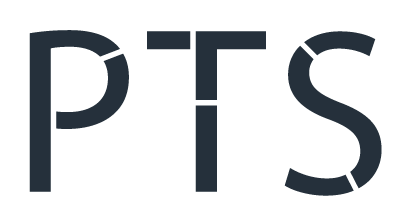19 Cybersecurity Policies Every Business Needs: From the Boardroom to the Desktop
Cybersecurity is no longer just an IT issue; it is a board-level responsibility. For companies in Hong Kong and across Asia, the rise in cyberattacks, data breaches and compliance obligations makes a robust cybersecurity policy framework essential. Whether your business employs ten people or a thousand, formal policies are the foundation of protection, accountability and trust. At PTS Managed Services, our ISO 27001-certified team helps organisations design and maintain the right cybersecurity policies to safeguard data, systems and reputation.
Why Cybersecurity Policies Matter
Technology alone cannot secure a business. Firewalls, antivirus tools and cloud defences mean little without clear rules on how people use them. Written cybersecurity policies provide the structure and discipline that keep data secure and employees accountable. A well-defined policy framework sets expectations for how information and systems are handled, reduces the risk of human error and insider threats, demonstrates due diligence to clients, regulators and insurers, and aligns IT operations with corporate governance and risk appetite. Without policies, even the best-designed network is vulnerable to failure through misunderstanding or negligence.
Building a Policy Framework That Works
A cybersecurity framework connects business leadership to day-to-day practice. At the top, the board approves the information security policy, defining objectives and assigning accountability. Beneath it, operational and user-level policies govern behaviour, access and response. Policies should be concise, relevant to your organisation and reviewed at least annually or whenever there is a major change in technology or regulation.
Define what’s important in your business
Having Good policies in place and communicated to your staff may seem mundane but it can save you lot of pain in the future.
Essential Cybersecurity Policies for Every Business
The following policies form the core of a comprehensive information security programme.
Information Security Policy: The foundation document that outlines overall intent, scope and responsibilities. It demonstrates management commitment to security and defines how the business protects information assets.
Acceptable Use Policy (AUP): Clarifies what employees can and cannot do on company networks, systems and cloud services. It covers internet browsing, file sharing, email use and device handling.
Access Control Policy: Defines how accounts are created, managed and revoked. It ensures that users only have access to the information they need and enforces principles such as least privilege and role-based access.
Data Protection and Privacy Policy: Explains how the organisation collects, stores and shares personal data in line with the Hong Kong PDPO and international regulations such as the GDPR.
Password Management Policy: Sets minimum password lengths, reuse restrictions and multi-factor authentication requirements.
Email and Communication Policy: Protects the business from phishing and data leaks by governing email attachments, forwarding rules and use of messaging platforms like Teams or WhatsApp.
Incident Response Policy: Provides a clear plan for identifying, reporting and managing security incidents to limit damage and restore operations quickly.
Backup and Recovery Policy: Defines what data is backed up, how often and where it is stored to ensure recovery after hardware failure, ransomware or natural disasters.
Remote Work and BYOD Policy: Sets standards for using personal devices and home networks to access corporate resources securely.
Vendor and Third-Party Security Policy: Ensures that suppliers handling company data meet your security standards and sign confidentiality agreements.
Change Management Policy: Controls how IT changes are reviewed, tested and implemented to prevent system disruption and configuration errors.
Physical Security Policy: Regulates access to offices, data centres and server rooms, including visitor control and equipment protection.
Network Security Policy: Details firewall management, Wi-Fi configuration, intrusion detection and encryption of network traffic.
Software and Patch Management Policy: Ensures operating systems and applications are kept up to date and unapproved software is restricted.
Security Awareness and Training Policy: Mandates regular employee training, phishing simulations and knowledge checks to reduce human error.
Business Continuity and Disaster Recovery Policy: Covers resilience planning, failover systems and recovery testing so that business-critical functions continue after an incident.
Mobile Device Security Policy: Applies controls for smartphones and tablets, including remote wipe capabilities and mobile-device-management tools.
Encryption Policy: Defines encryption standards for sensitive data both at rest and in transit.
Clear Desk and Screen Policy: A simple but effective measure to prevent accidental data exposure in the workplace.
Embedding Policy Into Daily Operations
Policies only work if people follow them. Every employee, from the managing director to the newest recruit, should acknowledge and understand the rules that apply to their role. Regular reviews, clear ownership and top-down communication are essential. At an operational level, aligning cybersecurity policy with service management, for example under ISO 20000, ensures continuous improvement and compliance across the IT environment.
Reviewing and Updating Policies
Cybersecurity threats evolve constantly, and your policies must evolve too. Schedule annual reviews or sooner if new technology is introduced, a security incident occurs, or legal and regulatory changes take place. Keeping documentation current also supports audit readiness for ISO 27001 and other security frameworks.
Conclusion
Cybersecurity policies are not optional. They are the rulebook that keeps your business safe, compliant and operational. For organisations in Hong Kong, the challenge is to balance practicality with protection. Policies must be enforceable, not theoretical. PTS Managed Services can help your business develop and maintain a comprehensive cybersecurity policy framework aligned with ISO 27001 best practice. Our certified experts design, implement and manage secure IT environments that protect your data and support your strategic goals.
Book a consultation today to discuss how we can strengthen your cybersecurity posture and ensure your policies work as hard as your technology.
Contact PTS Managed Services – your partner for secure, compliant and resilient IT systems.

